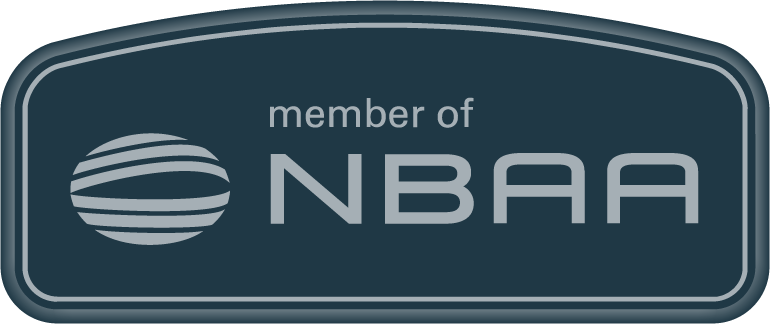Info
&
Insights
What It Takes to Implement a Safety Management System (SMS)
December 11, 2024

Implementing a Safety Management System (SMS) is a transformative step for any aviation operator. It establishes a systematic approach to managing safety, including necessary organizational structures, accountabilities, policies, and procedures. However, it requires careful planning, commitment from all levels of the organization, and adherence to industry standards. Here’s a breakdown of the essential components to consider when implementing an SMS, along with tips for navigating the process effectively.
Choosing Between a Paper-Based or Software-Based SMS
One of the first decisions operators must make is whether to adopt a traditional paper-based SMS or a software-based system.
- Paper-Based SMS: Ideal for small operators with limited resources or straightforward operations. It’s cost-effective upfront but can be labor-intensive for tracking data and generating reports
- Software-Based SMS: Provides scalability, streamlined data collection, and reporting features. While the initial investment may be higher, it’s often more efficient in the long term
The choice depends on your operation’s size, complexity, and budget.
Development of an SMS Manual
The SMS manual serves as the foundation of your program. It outlines policies, processes, roles, and responsibilities for everyone in the organization. A good manual should be:
- Tailored to your organization
- Aligned with ICAO, FAA, or other regulatory requirements
- A living document that evolves with your operation
Defining Key Roles: Accountable Executive, Managers, and Frontline Staff
- Accountable Executive: This person has ultimate responsibility for the SMS. Their commitment to safety sets the tone for the organization
- Managers: Act as the bridge between the executive and frontline staff, ensuring processes are followed and risks are managed
- Frontline Staff: Integral to hazard reporting and operational safety, as they are often the first to spot safety concerns
Ensuring all roles are clearly defined and understood is crucial for SMS success.
Developing a Hazard Reporting System
Encouraging employees to report hazards is a cornerstone of SMS. To create an effective system:
- Ensure anonymity and confidentiality when appropriate
- Make reporting simple and accessible
- Foster a non-punitive reporting culture
Safety Risk Management (SRM) and Risk Assessment Process
SRM involves identifying hazards, assessing risks, and implementing mitigations. Developing a robust SRM process includes:
- Standardized risk assessment tools
- Clear criteria for assessing severity and likelihood
- Documentation of mitigations and follow-up actions
Providing Safety Communications to the Team
Regular communication ensures that safety remains a top priority. Use newsletters, safety meetings, or digital platforms to:
- Share hazard reports and lessons learned
- Highlight safety achievements
- Provide updates on SMS progress
SMS Training for All Individuals
Training is critical to understanding SMS and ensuring compliance. Training should:
- Cover roles and responsibilities for all employees
- Be tailored to different levels within the organization
- Include initial and recurrent sessions to keep safety practices fresh
Developing an Internal Audit Program
An internal audit program ensures SMS effectiveness and compliance. Elements of a strong audit program include:
- Scheduled audits to assess SMS implementation
- Clear checklists and guidelines
- Documentation and follow-up on corrective actions
Assessing Safety Culture
Safety culture is the backbone of SMS. Operators should:
- Conduct regular culture surveys
- Address gaps in trust, accountability, and communication
- Reinforce leadership’s commitment to safety
Developing Processes for Full Implementation
To ensure SMS is fully implemented:
- Integrate SMS processes into daily operations
- Use Key Performance Indicators (KPIs) to monitor progress
- Review and refine processes regularly
Understanding the Timeframe
Implementing an SMS takes time and varies by organization size and complexity. While smaller operators might complete the process within 12–18 months, larger or more complex organizations might take 2–3 years. The timeframe includes:
- Initial planning and resource allocation
- Training and manual development
- Gradual integration of SMS components
Preparing for the FAA SMS Mandate
With the FAA SMS mandate looming, organizations must prioritize SMS readiness. Steps to take now:
- Assess current safety processes and identify gaps.
- Begin training employees to understand SMS principles.
- Allocate resources, including budget and personnel, to support SMS development.
Why Training Matters
Training is the linchpin of a successful SMS. It ensures that all personnel:
- Understand their role within the system
- Are equipped to identify and mitigate risks
- Can contribute to a culture of safety
Investing in training early not only accelerates implementation but also builds the foundation for long-term success.
Implementing an SMS is a challenging but rewarding process. By focusing on comprehensive planning, organizational commitment, and continuous improvement, operators can create a safer, more resilient aviation environment. With the FAA SMS mandate approaching, there’s no better time to begin the journey. Remember, the success of your SMS hinges on the engagement and dedication of every individual in your organization.
###





